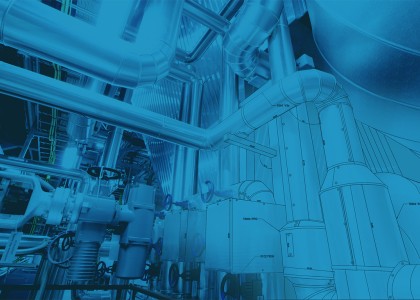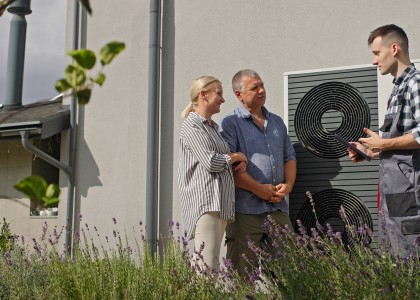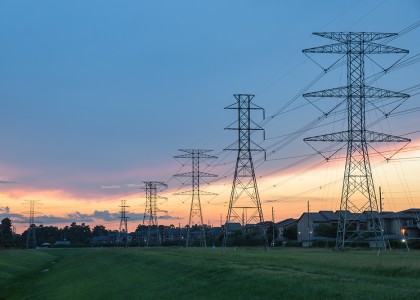Gradually, more offices, schools, and retail stores are reopening, with trends varying from state to state, and often among counties within states. As they reopen, many building owners and managers are considering steps they should take to reduce chances of coronavirus transmission. In this blog post, I summarize what we know and don’t know about the subject and then discuss recommendations based on the best expert guidance we have seen.
As an energy efficiency organization, we want buildings to be safe, and we look for ways to make them safe without wasting energy. Reducing COVID-19 risks is the priority, and research and guidance show that many of the best recommendations to reduce risk can be implemented without excessive increases in energy use.
What we know and don’t know
We know that the coronavirus is much less likely to be spread outdoors than indoors. For example, in a database of more than 1,500 superspreading events, only 3 are indicated as having taken place outdoors (0.002% of the cases) and another 57 (4% of the cases) are cases with both indoor and outdoor elements where it is not clear where infection occurred. The vast majority (more than 95%) of the superspreading events took place indoors.
We know that a primary mechanism for spread of the virus is droplets emitted by infected people, commonly (but not solely) breathed in by people within six feet of an infected person.
We know that the virus can live for a period of time on many surfaces and be picked up when someone touches that surface and then brings their hand to their mouth or nose. This is why people are urged to wash their hands frequently and why there are many recommendations for regularly cleaning surfaces that can become contaminated. However, the emerging consensus is that infection from surfaces is infrequent.
We also know that in some cases, the virus can be carried by air currents farther than six feet. The classic example, noted in this study, is a restaurant in Guangzhou, China, where it appears that infected droplets were pushed by a ductless fan coil from an asymptomatic infected diner to two adjoining tables, infecting diners at those two tables. No other people in the restaurant got COVID-19 even though the entire restaurant was poorly ventilated and the infected person was there long enough for any aerosolized particles to likely spread throughout the room.
We know that chances of catching COVID-19 increase as the viral load and period of exposure increase. This is why a Washington State choir practice became a superspreader event – high loads from singing with people in the same room for 2.5 hours.
We know that lack of ventilation can aid spread of the virus (e.g., the Guangzhou restaurant example had ventilation rates approximately one-tenth of the ventilation rates required in California and recommended by the most widely used indoor air quality standards for buildings.) However, there is a debate on how much ventilation is appropriate (more on this later).
We know that some filters can screen out coronavirus cells and UV light can inactivate the virus. There is debate on the degree to which these techniques should be deployed (again, more on this later).
We know that no study has yet documented transmission of coronavirus through building air handling systems. One study found coronavirus RNA in a hospital HVAC system, but the researchers did not test if the viral particles were viable (able to infect people), and they report that “no known transmission events were determined to be associated with these specimens.” This is an area where further research is needed.
What should a commercial building owner or manager do?
Several organizations have explored this topic. Among them is ASHRAE, which has issued a variety of resources. We find particularly helpful guidance from a revised white paper released yesterday by Taylor Engineering, a San Francisco-area mechanical engineering firm. The firm is headed by Steve Taylor, a mechanical engineer who, among his many qualifications, chaired for several years the committee that develops the most widely used indoor air quality standards for buildings. Please note that these are general guidelines, and each building type and individual building is different – your mileage may vary. Building owners and managers should consult with trusted health professionals and mechanical engineers.
In the Taylor Engineering paper, the authors evaluate various mitigation measures using a subjective rating system. This system provides guidance on the most effective and cost-effective mitigation measures. Building owners and managers should start with the 5-star measures, and as resources permit, work down to at least one-star measures—and potentially even lower.
Mitigation measures with five stars:
- Require masks be worn at all times indoors in areas where more than one person can gather
- Maintain social distancing
- Require and pay for employees to be tested regularly
- Require symptomatic or diagnosed employees to stay home
- Conduct meetings via video, not in person
- Work from home as often as possible
Measures with three and four stars:
- Implement flexible paid sick leave policies so sick employees can stay home
- Reduce office workplace density and install plexiglass guards
- Wash hands frequently
- Ensure HVAC systems are providing at least Standard 62.1 and code minimum ventilation rates
- Disinfect common area and restroom surfaces frequently
- Install fever warning system thermal imaging equipment at public entries
Measures with one and two stars:
- Convert restroom fixtures, doors, and toilet seats to be automatic and touch free
- Install upper room UV-C in public waiting rooms and restrooms (upper room means in the upper part of rooms to minimize occupant exposure; the “C” indicates wavelength band)
- Install portable HEPA air cleaner in elevators
- Use MERV 13 filters in HVAC system (MERV is a rating on filter effectiveness; MERV 13 is common in new buildings, but many older buildings have less-effective filters and should be upgraded if costs are reasonable)
- Disable demand-controlled ventilation and occupied standby (i.e., keep ventilation systems operating during the workday)
- Recommission HVAC systems and update control sequences (this measure will make sure the ventilation system is working as designed but is not wasting energy).
The authors suggest a half-star measure with zero cost: disable zonal fans such as ceiling fans where not essential for thermal comfort, as such fans can spread the virus.
The authors also identified several half-star measures that they do not recommend, because they view the costs as greater than the benefits. These include installing portable HEPA filters in workstations, increasing ventilation rates, increasing outdoor air rates, operating ventilation systems 24/7, installing UV-C in air handlers, and adding humidification. They do not recommend HEPA filters in workstations out of concern for worker acceptance and because such filters could provide a false sense of security and reduce mask use. Ventilation is discussed in the next section.
What about ventilation?
In the case of ventilation, low ventilation rates can allow small particles to linger, as in the Guangzhou restaurant. Providing ventilation is very important, but as ventilation rates increase, the incremental benefit declines. Taylor Engineering finds that “current code minimum ventilation rates may be adequate if everyone wears masks” (this is talking about California minimums, which are similar to recommendations in ASHRAE Standard 62.1-2016).
Taylor Engineering points out that ventilation does not affect heavy droplet transmission but can affect transmission via smaller particles by diluting viral concentrations. The authors examine a variety of studies related to a standard of reducing viral transmission risk to no more than 1% and conclude that without masks, even a heavily ventilated lab space would not meet the 1% target, but that with masks, a typical variable air volume HVAC system meeting ASHRAE Standard 62.1 would generally meet the target. They also examine the option of operating ventilation systems around the clock (“24/7”) and find that “even at the longest projected aerosol lifetime we found in the literature to date, the virus should be nonviable by the next day” (without 24/7 operation). They conclude that “the benefits with respect to transmission reduction appear to be negligible, while the significant increase in energy use is 100% certain.” For example, we recently heard about a multi-building campus that has increased its fan energy bill by $50,000 per month due to increased air-handling in operations—even as occupancy was at a minimum.
Some health professionals believe that higher ventilation rates should be implemented where possible to further reduce the risk of transmission (see here for example). More research is needed on whether increased ventilation beyond the current ASHRAE standard can significantly reduce coronavirus transmission. For example, it could be useful to study the air in hospital ventilation systems to see if viable coronavirus is present in the air entering rooms via the ventilation system; these systems now serve patients with and without COVID-19 and are worthy of study.
Taylor Engineering sees UV as a potentially useful strategy in high-use areas such as restrooms and public waiting rooms. UV can kill germs that linger in these high-use areas but does nothing to stop person-to-person transmission. For non-high-use applications, Taylor Engineering suggests that UV systems are not recommended as they can be expensive, are often difficult to apply in HVAC systems because of the air volumes and temperatures involved, and can degrade materials such as filters.
Impacts on energy use
Some of the measures discussed above can have a substantial impact on energy use. For example, for a building that normally operates 12 hours per weekday, operating fans 24/7 will more than double fan energy use. Such extra use could be worthwhile if it significantly reduced COVID transmission, but such reductions have not been demonstrated as of this writing.
The same can be said for increased use of outdoor air in ventilation systems beyond the levels suggested in ASHRAE 62.1. Use of MERV-13 filters (where such filters can be retrofitted) does increase the energy use of associated fans (by a few percent compared to MERV-8 filters), because the higher-MERV filters increase pressure losses in the ventilation system. In this case, however, the benefits of filtering out virus and other particles appear to be worth the moderate energy cost. And recommissioning HVAC systems and updating control sequences can often reduce energy use by identifying sources of energy waste, even if some of the needed adjustments increase energy use.
Conclusion
In our view, the Taylor Engineering recommendations represent a fair balance among health, comfort, and energy use. Building owners and managers should implement the most effective measures for their budget. The Taylor Engineering star ratings provide guidance, but as we get to the half-star measures, there is still debate and hence the need for more research. While we continue to learn more about the coronavirus, we do know that building owners can take steps to reduce transmission risks without significant increases in energy use.




